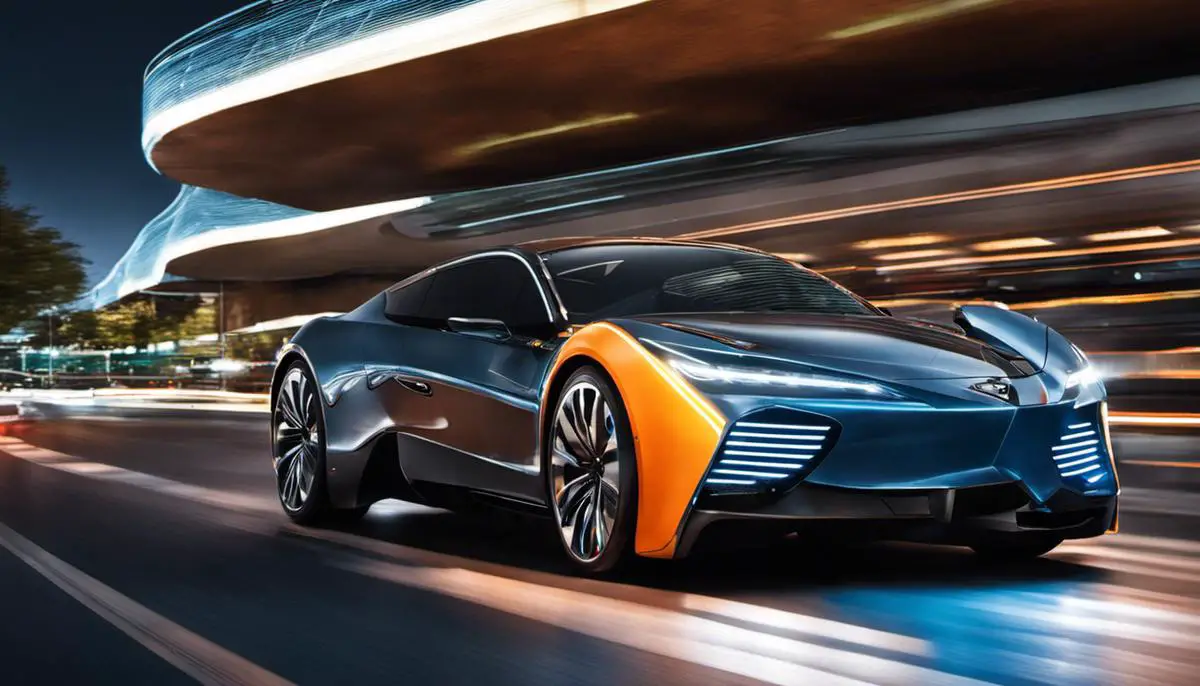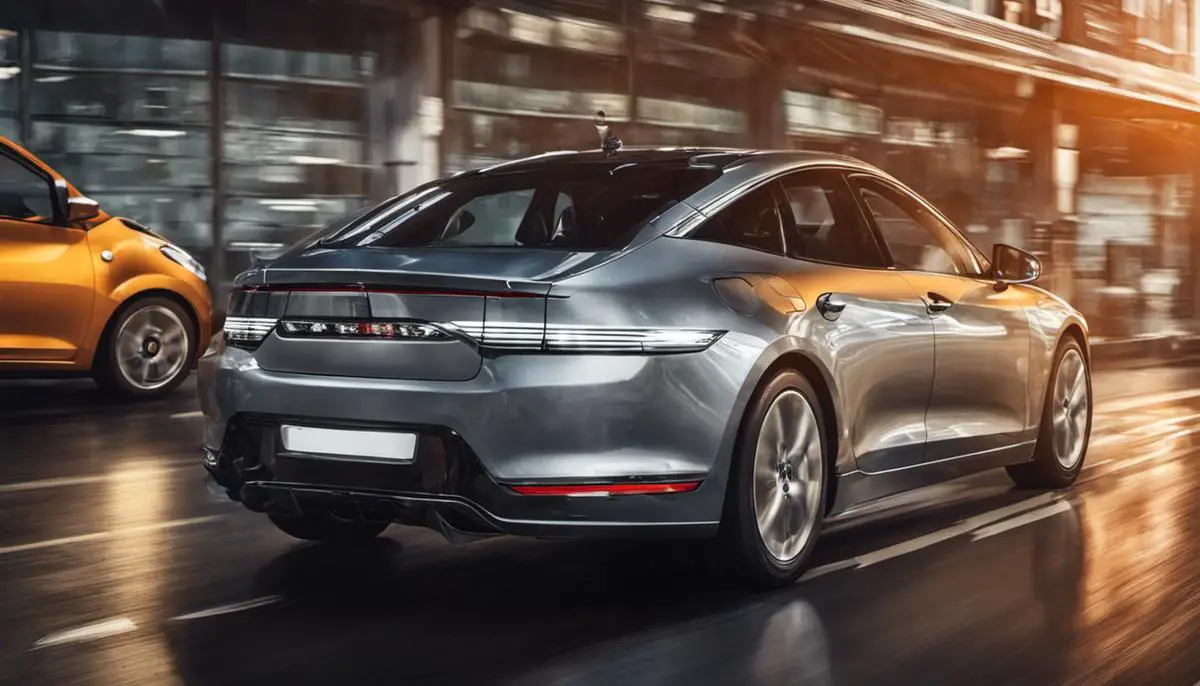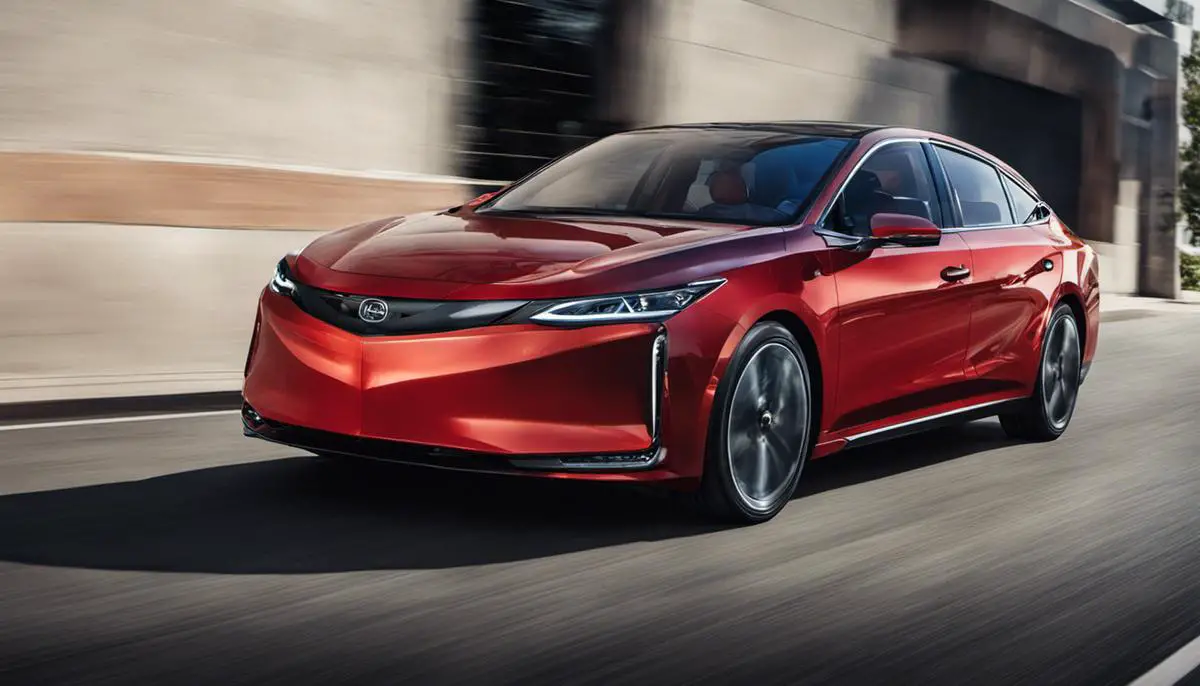Ensuring safety in modern vehicles has become a paramount concern for car brands in this technologically advanced era. As the innovations in transportation continue to surge, so does the responsibility of these companies to ensure the safety and security of the passengers. Manufacturers are inundated with the challenge of combining the highest level of safety features with the evolving development of automotive technology. This paper aims to provide insight into this imminent issue from various lenses: including how the implementation of safety tech, enhanced materials and build quality, Advanced Driver-Assistance Systems (ADAS), and design factors can improve vehicular safety. Furthermore, we will delve into the role of regulations and safety standards that car companies must adhere to, ensuring continued advancements in the realm of automotive safety.
Contents
Safety Tech implementations
Title: High-Tech Safety Features: Reinventing Car Safety For A New Era
The world of automobiles has seen revolutionary advancements in the last few decades, and one area where these improvements are most apparent is automobile safety. A cursory glance at modern vehicles shows a marked evolution in design, focus, and features, all aimed at enhancing passenger safety. Cutting-edge safety features aren’t just potential lifesavers during accidents; they serve to prevent mishaps in the first place. Let’s delve into how high-tech safety features raise the bar for car safety.
To kickstart this conversation, one must understand the role of advanced driver-assistance systems (ADAS), a top runner in driving high-tech safety. Be it autonomously applying brakes, detecting blind spots, or even adjusting the steering angle, the ADAS technology has proven to be a game-changer. By leveraging cameras, radars, and sensors, cars are now equipped to continually observe the driving environment, anticipate potential hazards, and react proactively, thereby reducing the risk of accidents.
In an era where distractions abound, automated emergency braking (AEB) systems play a crucial role in accident prevention. More than just an advite warning system, AEB can apply brakes automatically to avoid collisions or lessen their impact. What’s more, pedestrian detection functionality broadens this safety feature’s scope, protecting not just the cars and their occupants but all road users.
Next, we move on to lane assist systems, which have proven incredibly beneficial in countering the increasingly common issue of driver fatigue. Through intricate cameras and sensors, these systems can identify when the vehicle starts drifting from its lane and accordingly issue an alert or even make slight steering adjustments.
Also, the introduction of adaptive cruise control has redefined longer commutes and highway driving. It automatically adjusts the vehicle’s speed to maintain a safe distance from the car in front, considerably enhancing safety and driving comfort.
Then comes blind-spot detection technology, a real boon in busy traffic conditions. This feature alerts the driver of vehicles in their blind spots, aiding safe lane changes and maneuvers, reducing the potential for side-swipe accidents.
High-tech safety features certainly aren’t limited to the aforementioned. The emergence of technologies like night vision systems, rear-view cameras, and automatic parking facilities further underscores the significance of the paradigm shift in car safety.
In summary, the thrust today is on preventing accidents rather than merely mitigating their impact – a huge leap from the previous focus on seatbelts and airbags. High-tech safety features promise a safer, smarter driving experience by interweaving advanced technology with intuitive safety practices. However, as with any technology, these high-tech safety features are tools that work best when complemented by attentive and responsible driving. So while enjoying these incredible safety features, let’s remember: the goal is a safe journey for us all. So, stay alert and enjoy the ride!

Materials and Build Quality
The Vital Role of High-Quality Build and Materials in Contemporary Vehicles
In today’s automobile domain, the demand for superior build quality and top-notch materials is no longer optional—it’s non-negotiable. Modern-day vehicles are not merely tools for getting from point A to B; they’ve transformed into high-tech mobility platforms integrating complex safety, comfort, and entertainment systems. Tunnel vision on tech-oriented features risks overlooking the fundamental importance of solid build quality and superior materials—the foundation upon which all other capabilities thrive.
Investing in high-quality construction goes beyond aesthetics and tactile allure; it’s about enhancing vehicle longevity. Similar to a timepiece or a piece of jewelry, a well-made vehicle has the potential to serve for generations. Although it’s captivating watching an old car conquering the road, it’s the result of meticulous design and craftsmanship under the hood, which ensured durability and withstood environmental challenges.
Yet, the concept of superior build quality extends further into the realm of safety. The use of high-strength and ultra-high-strength steel, aluminum, and new-age composite materials in vehicle construction results in designs that better protect the inhabitants in the unfortunate event of an accident. The use of these materials can significantly minimize the car’s body deformation during a collision, proving pivotal in enhancing crash safety ratings.
Materials innovation doesn’t stop at safety; it likewise influences a vehicle’s performance parameters. The move towards lighter, more resilient materials like carbon-fiber composites markedly enhances fuel efficiency and power-to-weight ratio, thus improving handling and performance – aspects that every automobile enthusiast appreciates. When pondering about the exhilaration of speeding along the highway or tackling a difficult curve, remember it’s principally granted by these advanced materials, reinforcing the vehicle’s underlying structure.
The superior build quality also has a role to play in the quietness and smoothness of your ride. Attention to detail in design and assembly ensures fewer squeaks and rattles, providing that much-desired hushed and comfortable drive. Additionally, sublime craftsmanship minimizes mechanical faults and maintenance issues, making drives uncomplicated and enjoyable.
Last but not least, top-quality build and materials are essential when integrating advanced technologies and features, such as those mentioned in the first part of the article. These technologically advanced systems require a robust, well-constructed vehicle to function efficiently. Superior build quality ensures these systems are perfectly housed, protected, and integrated, offering optimal performance and safety.
In a nutshell, while modern automobiles continue to dazzle with sophisticated technology and systems, the heart of a grand performing vehicle remains its solid build quality and the superior materials employed in its construction. These elements ensure longevity, safety, and optimum performance, elevating the experience of every journey taken, asserting that demand for top-tier build quality and materials is not merely crucial—it’s an absolute necessity.

Advanced Driver-Assistance Systems (ADAS)
Revolutionizing Safety: Exploring ADAS Contributions and Technologies
As car enthusiasts and safety advocates, there’s a universal appreciation for the multiple ways Advanced Driver-Assistance Systems (ADAS) have positively shaped our journeys. Beyond the common aids already addressed, there are several other ways these technologies ensure the safety of drivers and passengers.
Delving into the less known but equally essential components, Traffic Sign Recognition (TSR) deserves a special mention. It’s designed to minimize accidents caused by missed road signs by distinguishing and alerting the driver about speed limits, no-entry signs, and more. It’s a reassurance that carefully placed road signs won’t go unnoticed, minimizing the potential for mishaps on the open road.
Then there’s Forward Collision Warning (FCW), a godsend in busy urban traffic. This system is designed to detect a potential collision with a vehicle in its path. It sends out an alert, allowing the driver to apply the brakes and avoid a collision timely. The beauty of the FCW is its simplicity – it’s constant vigilance without added distraction.
Operating similarly, yet showcasing a different functionality, is the Pedestrian Detection System. Often under-acknowledged but highly critical, this technology utilizes sensors and cameras to spot pedestrians or cyclists in the automobile’s trajectory. It’s built to emit an alert, averting possible collisions. It demonstrates ADAS commitment to keeping not just drivers and riders safe but ensuring pedestrian safety too.
Another brilliant feature has to be the drowsiness alert– a boon for long haul truckers and road trip enthusiasts. Constant monitoring of driver behavior allows the system to identify signs of fatigue, alerting the driver with visual and auditory warnings. Providing that extra layer of protection against fatigue-related accidents, it exemplifies the proactive nature of ADAS.
Lastly, the ADAS technology list would be incomplete without the inclusion of advanced weather adaptation systems. From the Rain Sensing Wipers that activate at the first touch of rain to Adaptive Headlights that modify the beam direction based on vehicle speed and steering angle, these weather-specific functionalities significantly enhance visibility in adverse conditions, improving driver safety.
As the automotive world continues to innovate, so does the development of the Advanced Driver-Assistance Systems. It doesn’t just flex futuristic technology and impressive capabilities; it represents a culture of active safety, respect for life, and an unwavering aim for zero fatalities on the move. The impact of ADAS on driver safety is invaluable, with its continual evolution bringing about a revolution in road safety as we know it.

Design Factors & Ergonomics
After gaining an understanding of various technologies reinforcing vehicle safety, let’s delve into the crucial role design and ergonomics play in ensuring safety.
Starting from the ground up, how a car is designed has significant effects on its safety factor. For instance, a lower center of gravity makes a vehicle less likely to tip over. Aerodynamics, when designed properly, can enhance driven stability, especially at high speeds or in windy conditions. Rounder edges, too, have a potential to reduce injury upon pedestrian impact, reflecting the thoughtfulness of safety in design.
Ergonomics, the study of people’s efficiency in their working environment, has a substantial impact on automotive design. Think of the controls and the dashboard: easy-to-access controls reduce the time the driver spends searching for them, making the drive safer. A well-laid dashboard furthers this, with vital information easily viewable, allowing the drivers’ eyes to stay on the road.
Ergonomics also takes into account the comfort, reducing driver fatigue on long trips. Properly designed seats that offer ample support and sufficient adjustment options lead to better posture, lessening the chances of discomfort or strain during drives. Steering wheels adjustable for both reach and rake facilitate a better, safer grip and vehicle control.
Ever wondered why pedals are arranged the way they are? Tradition? There’s more to it. The ergonomic arrangement allows drivers to effectively use their strongest and most accurate muscles for braking, ensuring quick reaction times.
Lighting and visibility are more aspects touched by design. Headlights and taillights are designed to optimize visibility without disrupting other drivers. Internal ambient lighting is being given ample thought to ensure it doesn’t distract the driver, improving safety during night drives.
The practical design of door handles, seatbelts and even the boot contributes to safety, reducing the risk of injuries from daily usage. Ease of operation takes precedence in designing safety features as well, such as the effortless access of child-lock or the smooth deployment of airbags.
In conclusion, design and ergonomics play an integral role in vehicle safety, beneficially influencing the overall driving and riding experience. Starting from the basic architecture to the minute interior elements, every facet is accounted for, keeping safety, efficiency, and comfort in focus. It ensures that our beloved vehicles are not just improved powerhouses or expressive style statements but also reliable companions keeping us safe through our journeys.

Regulations and Safety Standards
Diving deeper into the world of vehicle safety, one can’t overlook the transformative influence of regulations and safety standards; not merely as an insistence for adherence, but as a driving force pushing brands to go above and beyond in producing safer cars.
But how do these unseen guiding forces encourage car manufacturers to step up their safety game?
Regulations are essentially rules of order set in place to maintain standards and uphold safety. Automobile manufacturers are obliged to meet these standards. Stricter regulations and safety standards necessitate innovation. Brands are pushed to devise new safety solutions to adhere to regulatory requirements. Herein lies the silver lining – the brighter side of bureaucracy – regulations igniting a creative spark leading to safer cars on the roads!
One such innovation is Electronic Stability Control (ESC), not previously talked about in our journey through vehicle safety. A firm nudge from stringent safety standards led to ESC’s development and implementation – this advanced system improves a vehicle’s stability by detecting and reducing loss of traction and is now a standard feature in contemporary cars. Another bonus of regulatory influence!
Another area where regulations have wielded their magic wand is in the stringent monitoring of Emission Standards. Yes, even vehicle emissions are a safety concern, affecting the environment we live in. With tighter emission norms, car brands have been forced to innovate and produce more fuel-efficient and environmentally-friendly vehicles.
Moreover, the mushrooming of comprehensive safety rating systems like the US’s New Car Assessment Program (NCAP) has played a vital role in uplifting vehicle safety standards. Scoring high on these ratings is attractive to brands, encouraging them to manufacture safer vehicles. This competitive element has buyers rejoicing as the true winners with safer vehicles as their spoils.
In this race, constant technological evolution remains key. For instance, the Seat Belt Reminder (SBR) is a little champion born out of regulations that remind drivers to buckle up. Similarly, improving crash compatibility between different types of vehicles, pedestrian protection systems – are all safety features upgraded thanks in part to regulatory pulls.
Of course, cars are not stand-alone entities, they are integral components woven into the fabric of wider transport systems. Federal safety requirements also look at the interaction of the car with other elements in the transportation system – road construction standards, traffic rules, and more. Brands are driven to make vehicles that not only respect but sync harmoniously with these rules for a safer journey.
Treading into the future, robust regulatory practices will remain crucial in managing the emerging automated vehicle technologies – a new frontier in vehicle safety. Through robust regulation and testing, brands will surely be able to safely navigate through the world of self-driving vehicles.
Thus, the relationship between regulatory practices, safety standards, and vehicle manufacturers is mutually beneficial, evolving together towards a common goal – a safer, more efficient automotive world. Dive beneath the surface, and one will truly appreciate this harmonious dance between innovators and regulators, resulting in high safety standards in the world of cars. Majestic, isn’t it?

Car brands have journeyed far beyond merely manufacturing vehicles that move from point A to B. Today, the focus is on creating safer, smarter, and more sustainable automobiles for all. Through safety tech implementations, superior materials, and build quality, sophisticated ADAS, appropriate design factors, ergonomics, and due adherence to safety regulations and standards, car manufacturers are endeavoring to redefine vehicular safety. The road ahead is undoubtedly packed with challenges, radically new technologies, shifting regulations, and an ever-increasing expectation from the consumers. Even amid these complexities, the primary commitment of car brands remains unwavering: to ensure the utmost safety of every individual inside a vehicle. As we continue embracing the era of intelligent transportation, one can expect even greater strides in vehicular safety in the forthcoming years.



